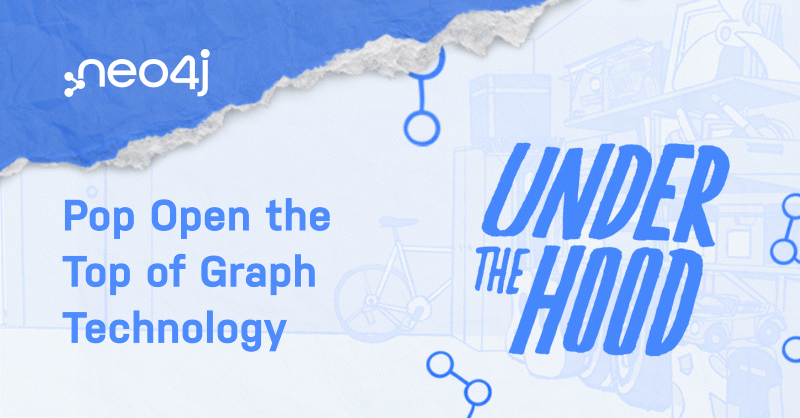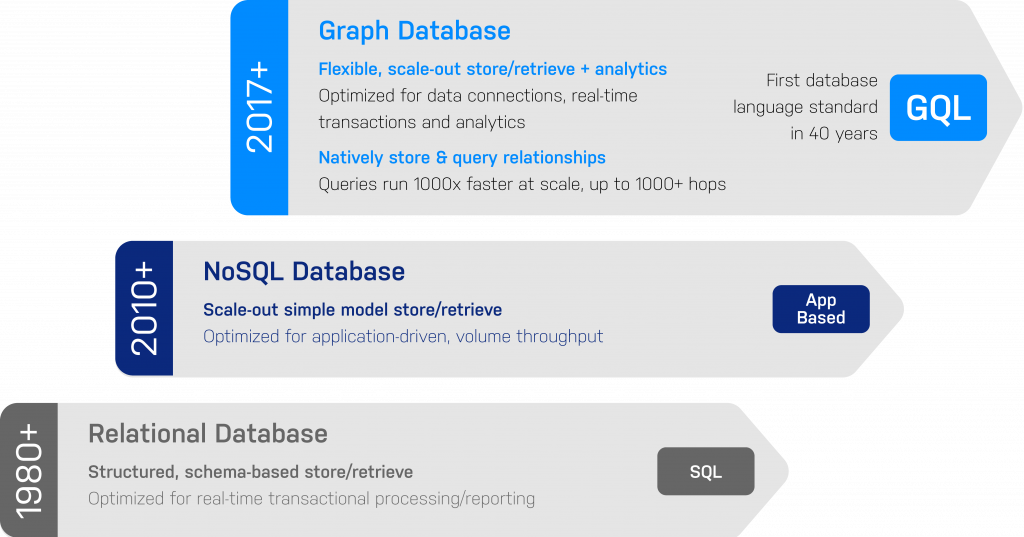Pop Open the Top of Graph Technology With Neo4j Under The Hood

Senior Director of Product Marketing
7 min read

I’m thrilled and excited to announce the launch of Neo4j Under The Hood – a series of short videos, presented by engineering leaders, intended to introduce you to the fundamental concepts of graph databases and showcase the nuts and bolts of graph technology.

Graph databases distinguish themselves through their ability to maintain arbitrary connections between data as a fully materialized entity that is as available for manipulation as with any other piece of information in the database. Beyond that, your database becomes dynamic and grows as your application grows, not only in terms of size but more importantly, in terms of the wealth of information it contains. It is no longer a sterile list of facts, but a custodian of knowledge – knowledge that you can extract, inspect, understand, and utilize.
Companies are adopting graph technologies to gain access to the real-time transaction analytics and AI/ML required to discover the drivers and metrics of their business, and to bring real-time, reliable intelligence and decisioning to everyday business workflows and opportunities. Graph technology’s talent for managing unstructured and changing data makes it ideal for handling the complexities and challenges of a variety of modern applications including:
- Real-Time Recommendations
- Social Network Publishing
- Artificial Intelligence/Machine Learning
- Knowledge Management
- Customer 360
- Fraud Detection and Analytics
- Supply Chain Management
- Network Systems Operations
- Cybersecurity
- Digital Transformation
- Internet of Things
- Identity and Access Management
- Master Data Management
- Metadata Management
Hardware improvements, the evolution of data processing algorithms, more reliable scalability: all of these are factors that allow database practitioners and application developers to extract more intelligence from, and push more work to, their database management systems (DBMS). This allows users to focus on the things that matter: modeling your domain, understanding your data and your users, and getting the most out of the time spent building your application.
The modern world is a whirlwind in which data is being created at exponential growth rates and data connections appear and dissolve dynamically. Relational databases were built for simpler times when data was stable and structured. Their rigid data models can’t be updated fast enough to meet the ever-changing needs of modern organizations.
Relational systems manage data in rows and columns, but that’s not how information exists in the real world. Modern datasets contain rich objects whose context includes their relationships with other objects. Such deep data value is lost when relational approaches strip away nearly all contextual relationships to force data into rows and columns.
Moreover, relational systems depend on predefined relationships that don’t adapt to change easily. They are simply too brittle to handle modern datasets with structures and relationships that change fast and unpredictably.
Each small change and addition to your data – triggered by both internal and external events – can cause time-consuming and costly relational schema redesigns. Those disruptions translate directly into lost revenues, higher costs, slow reaction times, and missed opportunities.
Does all this mean that relational systems are dead? No, but it does mean that you should consider more modern technologies if your organization needs to adapt to changing business environments and datasets.

Schema optional, index-free adjacency, relationships as first-class citizens – all these are terms you may have heard of alongside graph databases. All of these are important, and we will be talking about all of them in this video series, but they are only a few of the pieces that create a new foundation for data storage and manipulation.
Neo4j has been at the forefront of this revolution ever since creating the property graph model and the first to commercialize graph technology. We continue to remain the market and technology leader for graph databases and their applications.
It doesn’t matter if you are an application developer, a database designer, a data scientist, or engineer – Under The Hood is a series of videos intended to introduce you to the fundamental concepts you will need to take advantage of all that graph databases have to offer. We will be discussing data models and what their purpose is, basic design patterns that emerge when you start “thinking in graphs,” and how graph database management systems are designed and built to be the backbone of your entire data processing pipeline.
We invite you to go through the rest of the series keeping in mind your current application, or maybe a new challenge you want to take on, and see how the tools and techniques we will discuss fit with your domain and open up areas of exploration that you might have previously considered too costly or complex.
We have a lot of ground to cover. Hear from our technology leaders now, and start thinking in graphs!







